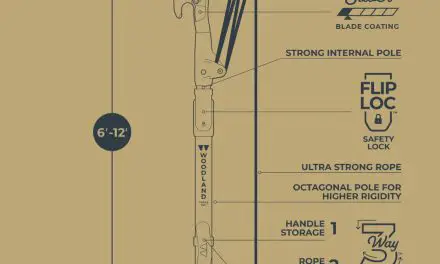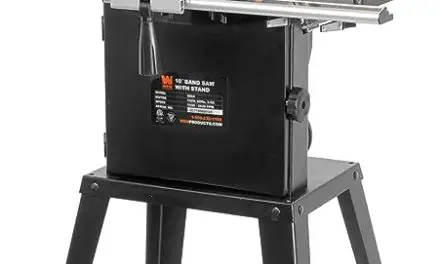A circular saw typically uses a power rating of 15 amps. This is the standard for corded circular saws, while lower amperage ratings like 10 or 12 amps are suitable for occasional use.
When choosing a circular saw, it’s important to consider the power requirements to ensure efficient and effective cutting. With a 15-amp saw, you can expect sufficient power for most cutting tasks. It’s essential to select the right circular saw for your needs to achieve optimal performance and safety.
Understanding Circular Saw Power Ratings
For a circular saw, the wattage and amperage ratings are crucial factors to consider. Corded saws typically have power ratings expressed in amperage, with 15-amp saws being the standard choice for regular use. On the other hand, cordless saws often indicate their power capabilities in watts.
Understanding these power ratings is important as it determines the saw’s performance and the type of tasks it can handle efficiently. When comparing corded and cordless saws, it’s important to note that corded saws tend to have higher wattage and amperage ratings, allowing for more power and cutting capacity.
Cordless saws, while more convenient due to their portability, may have lower power ratings and limited battery life. Ultimately, the choice between corded and cordless saws depends on your specific needs and preferences. Consider the type of projects you will be undertaking and the available power sources to make an informed decision.
How Many Watts Does A Circular Saw Require?
Circular saws require different wattages depending on their amperage rating. Typically, circular saws have a wattage range of 1200 to 1800 watts. This range is suitable for most woodworking projects and general cutting tasks. However, it’s important to note that the power consumption of a circular saw can be influenced by several factors.
These factors include the type of material being cut, the blade size, and the load placed on the saw. To calculate the wattage of a circular saw based on its amperage, you can use the formula: Watts = Voltage x Amperage.
By understanding the wattage requirements of a circular saw, you can ensure that you have the appropriate power supply or generator to support its operation.
Benefits Of Higher Wattage Circular Saws
Higher-wattage circular saws offer several benefits, such as increased cutting power and performance. These saws are designed to handle demanding cutting tasks with improved efficiency and productivity. With higher wattage, they can effortlessly cut through materials that would be challenging for lower-wattage models.
Whether you’re working with heavy-duty materials or need to make precise cuts, a higher-wattage circular saw provides the necessary power and torque. This means you can complete your projects faster and more effectively. So, if you’re looking for a circular saw that can handle tough jobs and deliver exceptional results, consider opting for one with higher wattage capabilities.
Choosing The Right Wattage For Your Circular Saw
To determine the appropriate wattage for your circular saw, start by assessing your cutting needs. Consider the types of projects you typically work on and the materials you usually cut. Factors to consider when selecting wattage include the thickness and hardness of the materials, as well as the frequency and duration of use.
Matching the power of the saw to your projects is crucial to ensure efficient and effective cutting. Remember that corded circular saws are typically rated in amperage, with 15-amp saws being the standard. Lower amp saws, such as 10 or 12 amps, are better suited for occasional or light use.
By carefully considering your cutting needs and matching the wattage of your circular saw accordingly, you can ensure optimal performance and avoid any potential power issues during your projects.
Understanding Amperage Ratings For Circular Saws
For corded circular saws, the power rating is typically measured in amperage. The most common amperage rating for circular saws is 15 amps, which has become the standard in the industry. However, for occasional or infrequent use, 10- or 12-amp saws can also be suitable.
It’s crucial to determine the appropriate amperage for your specific needs. Choosing a circular saw with the right amperage ensures that it can handle the tasks you have in mind without overloading or underperforming. Keep in mind that higher amperage usually translates to more power and cutting capacity.
So, understanding the relationship between amperage and wattage is essential when assessing the power requirements of a circular saw. By considering the amperage rating, you can find a circular saw that matches your cutting needs and provides optimal performance.
Evaluating Power Sources For Circular Saws
Circular saws can be powered either by cords or by batteries. Corded circular saws typically have higher power ratings, with 15 amps being the standard. On the other hand, cordless circular saws rely on battery power and have voltage ratings such as 18V or 20V.
There are pros and cons to each power source. Corded saws offer consistent power without the need for recharging or replacing batteries. They are also generally more powerful and suitable for heavy-duty tasks. However, the cord restricts mobility and limits the saw’s portability.
On the other hand, cordless saws provide greater mobility and convenience. They are ideal for working in areas without access to electrical outlets. However, they have limited run time and may require battery swaps or recharges during longer projects. When choosing a power source for your circular saw, consider factors such as the intended use, mobility requirements, and available power sources.
Assess your needs and prioritize what matters most to you in terms of power, portability, and convenience.
Power Tips For Optimal Circular Saw Performance
Circular saws vary in power consumption, but the standard for corded saws is a 15-amp rating. Lower amp saws, such as 10 or 12 amps, are suitable for occasional use but may lack the power needed for heavy-duty tasks. Proper maintenance and care are essential for ensuring optimal performance from your saw.
Regularly cleaning and lubricating the blade, inspecting the power cord for any damage, and keeping the saw’s motor housing free from debris will help extend its lifespan. Additionally, techniques for maximizing power efficiency, such as using the appropriate blade for the material being cut and maintaining a steady cutting pace, can help maximize the saw’s wattage.
Finally, always prioritize safety by wearing appropriate protective gear, following best practices, and adhering to safety precautions outlined in the manufacturer’s instructions.
Conclusion: Powering Your Circular Saw For Success
Choosing the right wattage for your circular saw is crucial for optimal performance. Most corded circular saws have a power rating expressed in amperage. The standard for these saws is usually 15 amps, while 10 or 12 amps are suitable for infrequent use.
By selecting the appropriate wattage, you can ensure that your circular saw has enough power to handle your projects efficiently. This will enhance its cutting performance and make your woodworking tasks smoother and more precise. So, before purchasing a circular saw, consider the wattage and make sure it aligns with your specific needs.
Doing so will set you up for success and ensure that your circular saw is powered appropriately for the tasks at hand.
Frequently Asked Questions For How Many Watts Does A Circular Saw Use?
How Big Of A Generator Do I Need For A Circular Saw?
Circular saws are typically powered by electric. Most circular saws require a power rating of 15 amps.
How Many Amps Does A Circular Saw Use?
Circular saws typically use a power rating expressed in amperage, with 15-amp saws being the standard choice for regular use.
What Are Circular Saws Usually Powered By?
Any circular saws are powered by electricity, but some models may also be powered by battery.
Conclusion
Motors, can range in wattage depending on the specific model and size of the saw. The power rating of a circular saw is typically measured in amps, with 15-amp saws being the standard for most applications. It’s important to choose a saw with enough power to handle the workload you have in mind.
While 10- or 12-amp saws may be suitable for occasional use or lighter tasks, a 15-amp saw is recommended for more frequent or heavy-duty use. Additionally, it’s crucial to consider the power source for your circular saw. Corded saws require an electrical outlet and should be matched with a generator or power supply that can handle the necessary wattage.
Overall, understanding the wattage and amp rating of a circular saw will help you make an informed decision and ensure optimal performance for your woodworking projects.



















